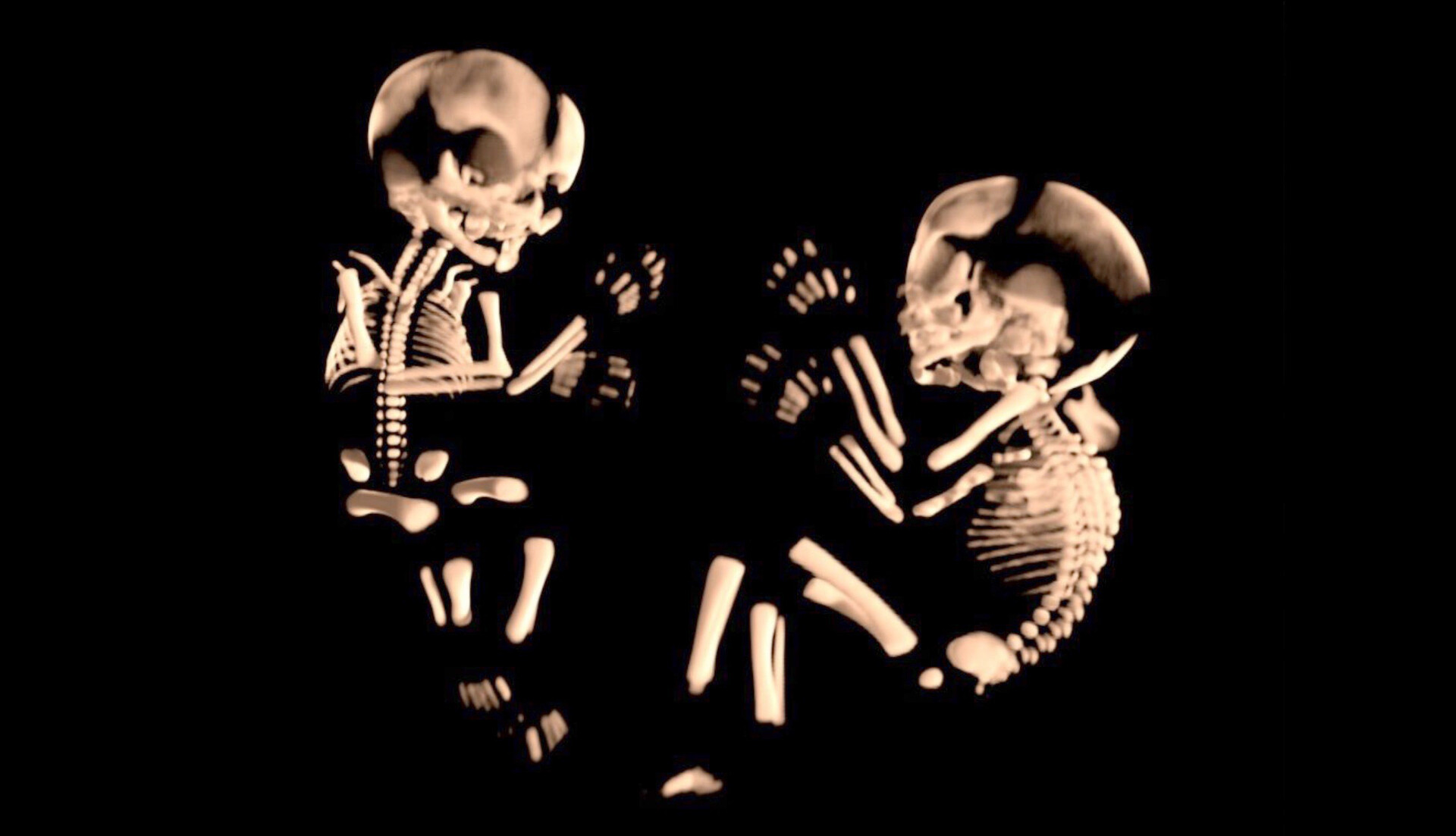
What is Melnick-Needles Syndrome? Melnick-Needles Syndrome (MNS) is a rare genetic disorder that affects bone development, leading to severe skeletal and craniofacial abnormalities. Caused by mutations in the FLNA gene, this condition is inherited in an X-linked dominant pattern, meaning it primarily affects males more severely than females. Individuals with MNS often exhibit distinctive facial features, such as full cheeks and a prominent forehead, along with significant skeletal issues like bowed long bones and ribbon-like ribs. With fewer than 100 cases reported worldwide, MNS presents a wide range of symptoms and complications, making early diagnosis and tailored management crucial for improving quality of life.
Key Takeaways:
- Melnick-Needles Syndrome is a rare genetic disorder causing severe skeletal and craniofacial abnormalities. It's caused by mutations in the FLNA gene and can affect various parts of the body, making early diagnosis and management crucial.
- While there is no cure for Melnick-Needles Syndrome, treatments such as physical therapy and surgical interventions can help manage symptoms and improve quality of life. Family planning and support resources are essential for affected individuals and their families.
What is Melnick-Needles Syndrome?
Melnick-Needles Syndrome (MNS) is a rare genetic disorder that affects bone development and causes severe skeletal and craniofacial abnormalities. Here are some key facts to help you understand this condition better.
-
Definition and Classification: Melnick-Needles syndrome is also known as Melnick-Needles osteodysplasty or osteodysplasty of Melnick and Needles.
-
Prevalence: This syndrome is extremely rare, with fewer than 100 cases reported worldwide.
Causes and Inheritance
Understanding the genetic basis and inheritance pattern of Melnick-Needles Syndrome is crucial for grasping how it affects individuals.
-
Causes: The condition is caused by mutations in the FLNA gene, which provides instructions for producing the protein filamin A.
-
Inheritance Pattern: MNS is inherited in an X-linked dominant pattern, meaning the gene is located on the X chromosome.
-
Gain-of-Function Mutation: The mutations in the FLNA gene are described as "gain-of-function," enhancing the activity of the filamin A protein or giving it a new, atypical function.
Symptoms and Physical Characteristics
Melnick-Needles Syndrome manifests through a variety of physical symptoms, particularly affecting the skeletal and craniofacial structures.
-
Facial Features: Individuals often have full cheeks, a prominent forehead, severe micrognathia (very small lower jaw), and retrognathia (receding jaw).
-
Bowing of Long Bones: The long bones of the arms and legs may be bowed.
-
S-curved Leg Bones: The leg bones may have an S-shaped curvature.
-
Ribbon-like Ribs: The ribs are often described as "ribbon-like," which can cause breathing problems.
-
Spinal Deformities: Spinal abnormalities such as kyphoscoliosis (a combination of kyphosis and scoliosis) are common.
-
Misaligned Joints: Partial dislocation (subluxation) of certain joints is a characteristic feature.
-
Abnormal Pelvis: The pelvis may be abnormally shaped, making childbirth difficult for affected females.
Additional Symptoms
Beyond skeletal and craniofacial abnormalities, Melnick-Needles Syndrome can affect other parts of the body.
-
Blue Sclera: The white part of the eyes (sclera) may appear blue.
-
Strabismus: Misalignment of the eyes is common.
-
Bilateral Exophthalmos: Bulging of both eyes can occur.
-
Conductive Hearing Loss: Hearing loss due to malformations in the tiny bones in the ears (ossicles) is possible.
-
Heart Defects: Some individuals may have heart defects.
-
Urogenital Symptoms: Issues such as obstruction of the ducts between the kidneys and bladder (ureters) may arise.
Prognosis and Diagnosis
Knowing the prognosis and how to diagnose Melnick-Needles Syndrome can help in managing the condition effectively.
-
Prognosis: The prognosis varies widely. Females may display various clinical characteristics but generally have a normal lifespan. Males are more severely affected and often die shortly after birth unless mosaicism is present.
-
Diagnostic Methods: Diagnosing MNS involves a thorough medical and family history, physical examination, and radiographic evaluation.
-
Genetic Testing: Genetic testing is crucial for diagnosing MNS by analyzing the FLNA gene for mutations.
Treatment and Management
While there is no cure for Melnick-Needles Syndrome, various treatments can help manage symptoms and improve quality of life.
-
Conservative Management: Physical therapy can improve mobility and prevent further deformities. Orthotics and prosthetics may support limbs and improve gait.
-
Surgical Interventions: Procedures such as osteotomies (bone cuts) and lengthening of bones can help improve alignment and function. Orthognathic surgery may correct jaw abnormalities.
-
Complications: Respiratory issues due to rib abnormalities, cardiac problems, and increased susceptibility to infections are common complications.
Family Planning and Support
Family planning and support resources are essential for managing Melnick-Needles Syndrome.
-
Family Planning: Genetic counseling can help families understand the risks and make informed decisions about future pregnancies.
-
Support and Resources: Support groups and patient advocacy organizations provide essential resources for individuals and families affected by MNS.
Research and Future Directions
Ongoing research aims to better understand Melnick-Needles Syndrome and improve diagnostic and treatment options.
-
Research and Development: Studies focusing on the FLNA gene and its role in skeletal development may lead to improved diagnostic tools and potential therapeutic strategies.
-
Case Reports: Case reports provide valuable insights into the clinical manifestations and management strategies for MNS.
-
Advancements in Diagnosis: Improved genetic testing and imaging techniques help in early detection and management of the condition.
-
Future Research Directions: Studies aim to develop targeted therapies and improve diagnostic tools, enhancing the quality of life for individuals affected by this rare condition.
Final Thoughts on Melnick-Needles Syndrome
Melnick-Needles Syndrome is a rare genetic disorder with severe skeletal and craniofacial abnormalities. Caused by mutations in the FLNA gene, it follows an X-linked dominant inheritance pattern. Symptoms range from bowed long bones and ribbon-like ribs to distinctive facial features like a prominent forehead and small lower jaw. Diagnosis involves genetic testing and radiographic evaluation. While there's no cure, management focuses on alleviating symptoms through physical therapy, surgical interventions, and regular monitoring. Genetic counseling is crucial for family planning. Support groups and ongoing research offer hope for better understanding and treatment. Despite its challenges, advancements in diagnosis and care improve the quality of life for those affected. Understanding this condition helps in providing appropriate care and support to individuals and their families.
Frequently Asked Questions
Was this page helpful?
Our commitment to delivering trustworthy and engaging content is at the heart of what we do. Each fact on our site is contributed by real users like you, bringing a wealth of diverse insights and information. To ensure the highest standards of accuracy and reliability, our dedicated editors meticulously review each submission. This process guarantees that the facts we share are not only fascinating but also credible. Trust in our commitment to quality and authenticity as you explore and learn with us.


